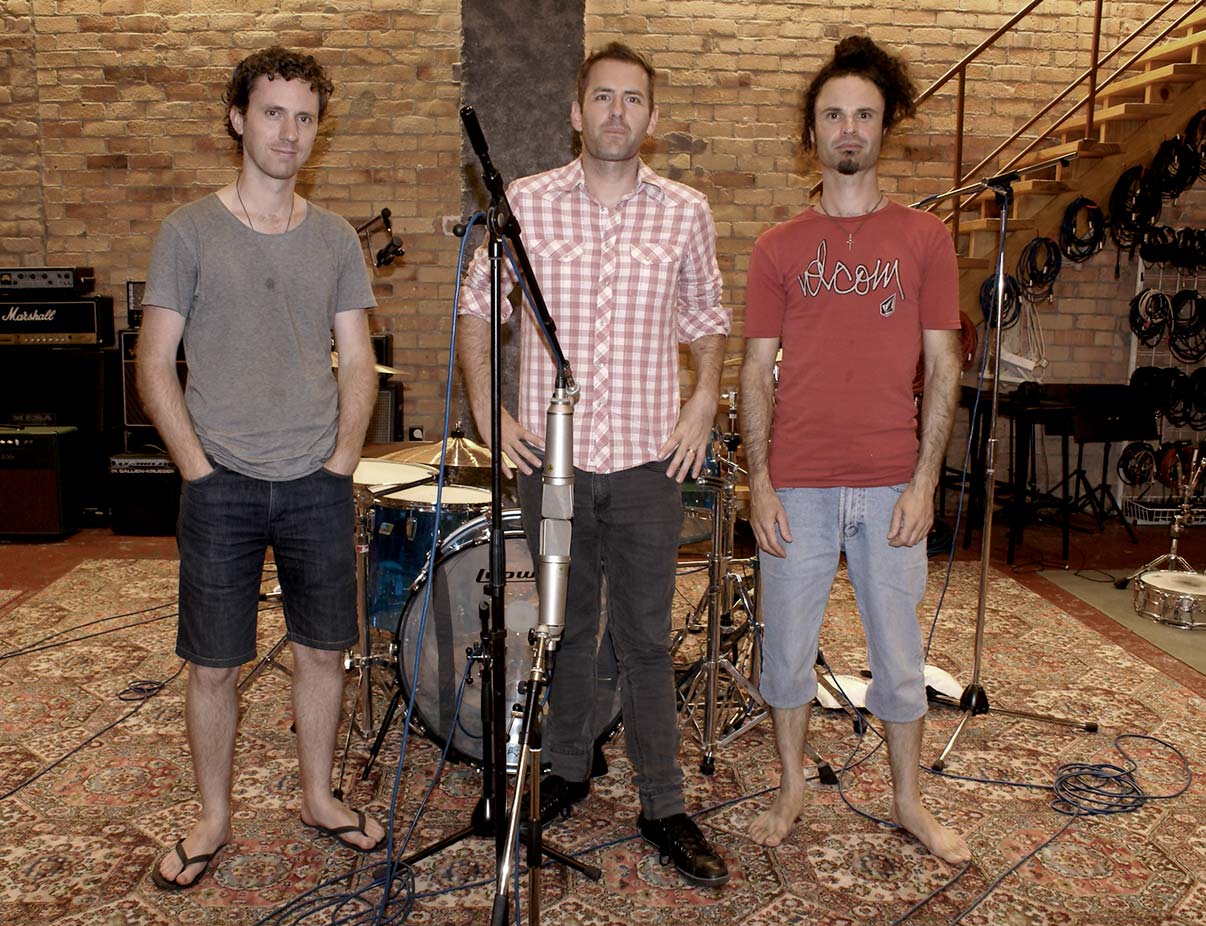
WHO IS ANALOGUE DRUMS?
Analogue Drums is run primarily by Dylan Lee, along with Nathan Koretz and Mike Tayler. Dylan heads the day-to-day running and production, every project is a collaborative affair, each kit is a result of input from everyone involved. Analogue Drums isn’t a big business, it’s truly a labour of love. We do it because we’re obsessed with drums, the recording process and the results, and we love hearing our drums with your music.
OUR APPROACH: CHARACTERFUL, REAL SOUNDING DRUMS
The drum sample market is saturated with immaculately produced yet predictable sounding drums that can feel inhuman. Our vision is to cater for those who want to hear authentic drums with vibrant timbre, personality and substance. We think this approach makes your music sound more alive and more musical.
We know that great drums speak for themselves so we seek to emphasise the natural character of the drums, the acoustic environment, and toneful gear without polishing away the occasional quirks and imperfections that give life to a drum sound. Having said that, like most musicians we appreciate a well-crafted instrument and take pride in the quality of our work, carefully honing the many details that contribute to an expressive sample library.
HOW YOUR DRUM SAMPLES ARE MADE
Step 1: AN IDEA
Every kit originates from a vision of a particular drum sound we want to realise. We’re never short of ideas, it might be organic and earthy, crisp and punchy, perhaps a sound from yesteryear that needs revival, or putting our spin on a current flavor. Anything goes in our book, often it’s a case of ignoring fashion rather than following it.
STEP 2: PRE-PRODUCTION
We go to great lengths to ensure the source sounds right before the recording session begins. We seek out the right set of drums to fit the vision, often a vintage beauty, occasionally a modern beast. We toil in the rehearsal room, tuning and tweaking the kit until it sings (or thuds, or snaps) and we hunt out and audition specific cymbals and outboard pieces until we obtain the necessary tone. We locate the optimal acoustic tracking space, and when we hit record, we’re ready.
STEP 3: PRODUCTION
The recording session is where the magic happens. It begins by dialing in the sounds through experimentation and tried and true engineering methods. Our patience is then put to the test for the remainder of the session, listening intently to hit after hit after hit. It’s a hard task for the drummer, bordering on torturous, to pull maximum tone out of each hit consistently for hours on end. We leave the session with the sound of cymbals slowly vibrating to a standstill firmly etched in our minds.
STEP 4: POST-PRODUCTION
We pick things up by sifting through the many hours of recorded material, inspecting transients and waveforms in ridiculous detail and critically listening to every drum hit as we boil the session down to a precision-trimmed batch of samples. The samples are then assembled into raw Kontakt/Trigger instruments, which are then mixed to fit the concept we’re aiming for, iterating until we’re happy. We test the kit and finally package it all up before sending it into the world.
STEP 5: CONTINUOUS IMPROVEMENT
Once the kit has been released our job isn’t done. We find and fix bugs (we’re human!) and we also work on ideas for how the kit can be improved, often as the result of customer feedback. Even our senior kits recorded more than 10 years ago are standing the test of time and are still being enhanced to this day. These updates are always free, if we figure out a way to make a kit better, we will make sure you have it.